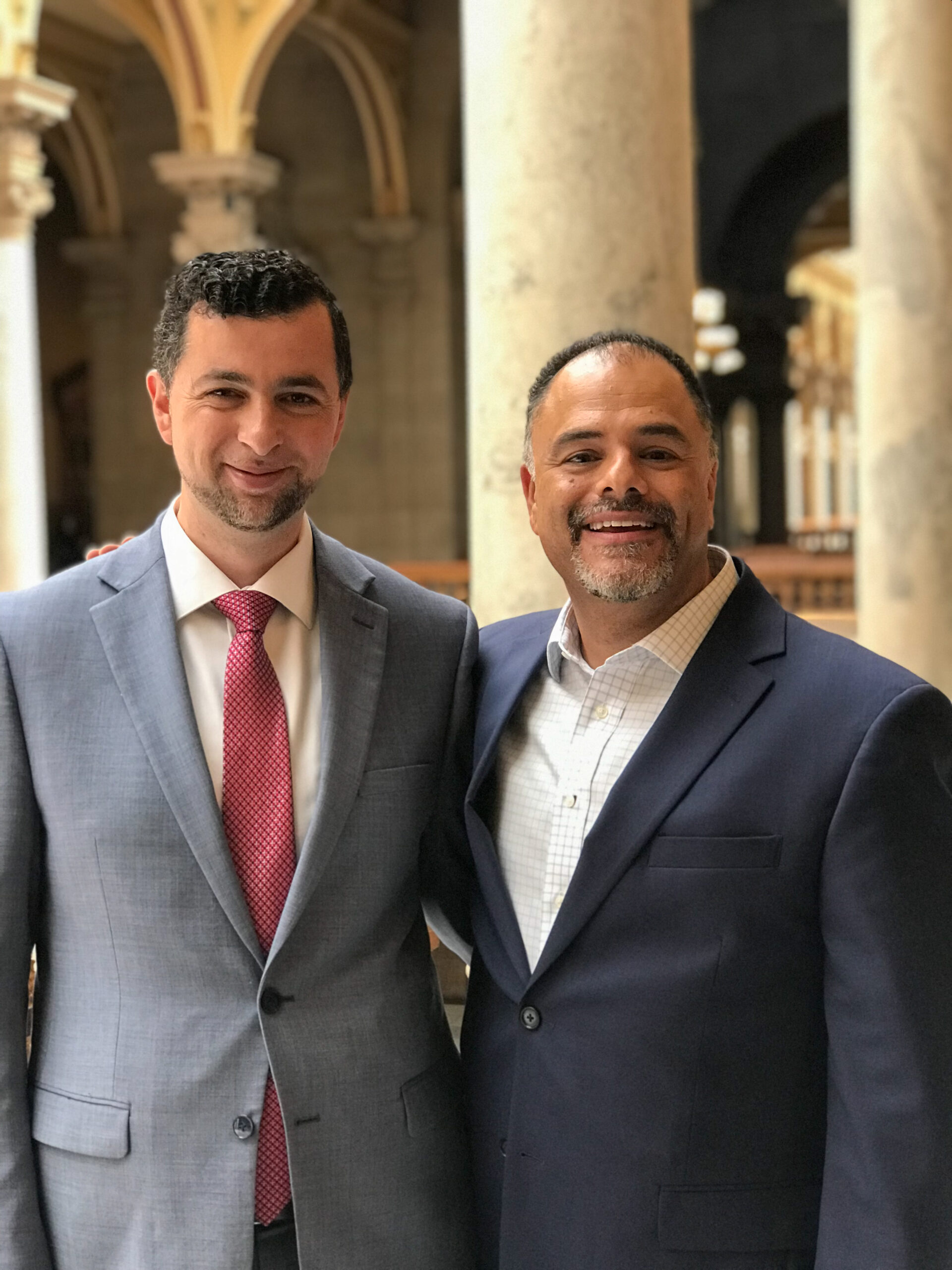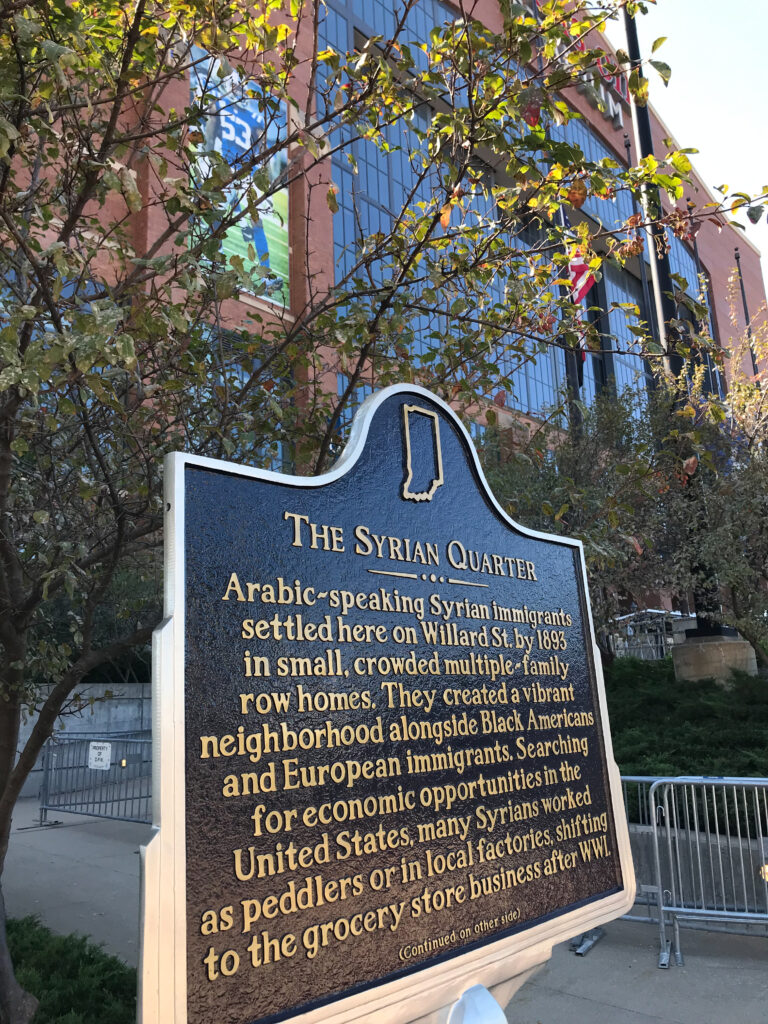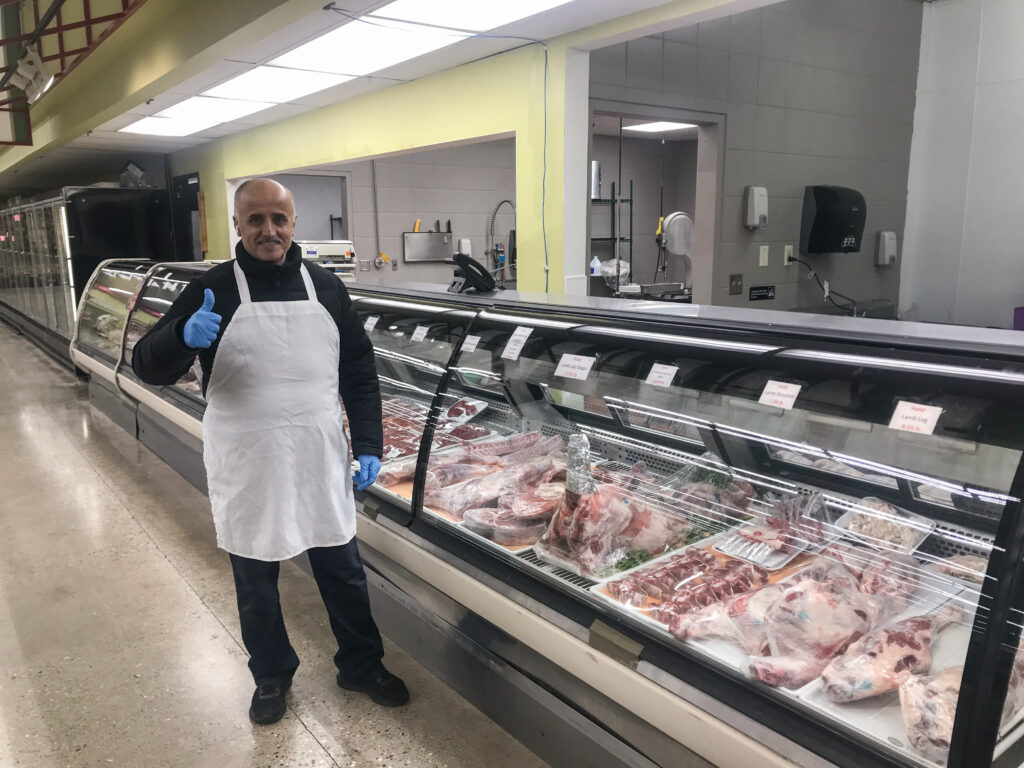Edward Curtis IV wants you to know there are Arab communities in the Midwest outside of Detroit/Dearborn. While the area has the largest and most diverse population of Arabs in the U.S. and Dearborn is a majority Arab city, there are many enclaves of Arab life throughout the Midwest that deserve to be celebrated too.
“[Detroit and Dearborn] are wonderful, so they seem to suck all the oxygen out of the room in terms of Arab spaces in the Midwest,” he says. “It’s so vital that we rediscover and take time to get to know other Arab-American communities.”

That’s why Curtis has dedicated his career to helping people do just that. Based in Indianapolis, where his Syrian ancestors settled when they immigrated to the U.S., Curtis is a public historian and scholar of Arab-American life in the region who has written 14 books about Muslim, Arab, and Black life.
His two most recent books focus exclusively on the Midwest. The first, Muslims of the Heartland: How Syrian Immigrants Made a Home in the American Midwest was awarded the 2023 Evelyn Shakir Non-Fiction Arab American Book Award by the Arab American National Museum, and the second, Arab Indianapolis, spawned a documentary of the same name which Curtis wrote and produced, which earned him two Emmys. Additionally, Curtis created an Arab Indianapolis Heritage Trail app that allows users to take themselves on a self-guided tour of locales—some still in existence and some not—that were important to the early Arab immigrants to the area.
Curtis’s work is a testament to the impact Arab peoples have had on Indianapolis, shaping the city into what it is today. From luminaries like Helen Corey, who was the first Arab-American elected to office in Indiana in 1964 and the author of the popular cookbook The Art of Syrian Cookery, to dozens of grocery stores and countless other shops, and so much more, Curtis highlights the many Arabs who have shaped Indianapolis. That began with an initial wave of Syrian immigrants in the 1890s who built an entire Arab-speaking neighborhood on what is now the area around Lucas Oil Stadium. Now, there’s a new generation of Arab-Americans who are leaving their mark on the city—and Curtis has plenty of recommendations on where visitors can experience their food and culture around town.




But first, a note to non-Arabs: “It is helpful if one speaks Arabic or if one has connections in the area because some of the richest Arab cultural activities in Indianapolis happen in Arab-majority or Arab-only spaces. They provide safety and a sense of being able to let one’s hair down, so to speak,” Curtis says. “There’s stuff that’s public and some great public-facing Arab events, but there are certain things you’re not going to have access to if you’re not a part of the community.”
This is true of many marginalized peoples, though there are still a number of spaces and experiences where the Arab community is inviting the larger public in. The most common are restaurants and markets.
Good Arab Eats in the City
-
International Marketplace
Variety is the spice of life, so begin on the west side of Indianapolis where you’ll find the International Marketplace, and inside is Rayan, a Yemeni restaurant and one of Curtis’s favorite dining spots.
“It’s our most well-known Yemeni restaurant. On the one hand, they serve typically Levantine food—Syrian, Lebanese, and Palestinian—so you can get your tabbouleh and hummus, but you can also get classic Yemeni dishes like Yemenite soup and mendi lamb.”
Another of Curtis’s favorites in the International Marketplace is Taste of Dubai, which has kebabs galore, as well as other dishes like fahsa [Yemeni lamb stew], shawarma, falafel, golden pompano fish, and more.
-
AIM Mart
On the north side of the city is the American International Market—or AIM Mart to those in the know—where there’s even more to delight in.
“When you enter, there’s a whole row of all the knickknacks you’d find at any Middle Eastern bazaar, from perfumes to hijabs to honey to a whole row of oriental carpets. There’s every kind of olive oil from every part of the Arabic-speaking world, plus bulk spices,” Curtis says.
To those who haven’t yet experienced the wonders of an Arab market, the bulk spices are an olfactory treasure, especially aromatic spice blends like za’atar and baharat. In Arabic, baharat is simply the word for “spices” and denotes a spice blend that can vary by country and region, but typically contains cardamom, pepper, paprika, cumin, cinnamon, coriander, nutmeg, and cloves.
“There’s a restaurant inside [AIM Mart] and the people who run it are from Zarqa, Jordan, and they’re Palestinian. So they offer all the typical Palestinian-Jordanian food from mansaf [lamb cooked in fermented yogurt and served over rice] to falafel,” Curtis says.
-
Broad Ripple Neighborhood
Next, head to the Broad Ripple neighborhood—a hip area for Butler University students, which makes it a happening place on Friday and Saturday nights—for the hookah bars. There are several to choose from, including a traditional Egyptian hookah establishment, as well as the sleek, modern, electronic music-playing Lava, which Curtis described as “like something out of a shopping mall in the Arabian Gulf.”
While the hookah bars typically serve food, there are Arab restaurants to enjoy in Broad Ripple as well.
“One is a Jordanian restaurant called Sahara, and one is called Canal Bistro and it’s right on the old canal. Indianapolis has a canal system that was built in the 1800s, so this is a particularly nice place to go if you want to sit outside. It’s owned by a Christian Egyptian-Lebanese couple and while they serve some non-Arab food, the heart of the place is Arab food,” says Curtis.
Arab Cultural Festivals in Indianapolis
While so much of culture revolves around food, there are many more aspects of Arab culture to experience. If you visit Indianapolis at the right time, you can attend Arab cultural and religious festivals.

“The historically Arab St. George Orthodox Christian Church in Fishers, Indiana, puts on an annual Middle East festival, where they honor the Arab-speaking Syrian and Lebanese founders of the church,” Curtis says. “During this festival, they’re dancing dabke [the traditional folk dance of Palestine], they’re serving kebab and hummus, falafel, playing the oud [a Middle Eastern stringed instrument similar to a lute], and celebrating the cultures of their founders.”
While there are non-Arab Muslims, Arabs contribute their cultural traditions to events that happen around the two Eids (Eid al-Fitr and Eid al-Adha).
“Also in Fishers is Alhuda Mosque, which has festivals that are open to the public, you’ll meet Arab people from Morocco to Iraq, see Arab clothing, and hear Arab music,” says Curtis.
The Midwest is and has always been diverse, and people from throughout the Arab world have helped make it so for more than a century. Indianapolis is no exception, and these Arab businesses and cultural events are a part of this long tradition of Arab excellence in the city.
